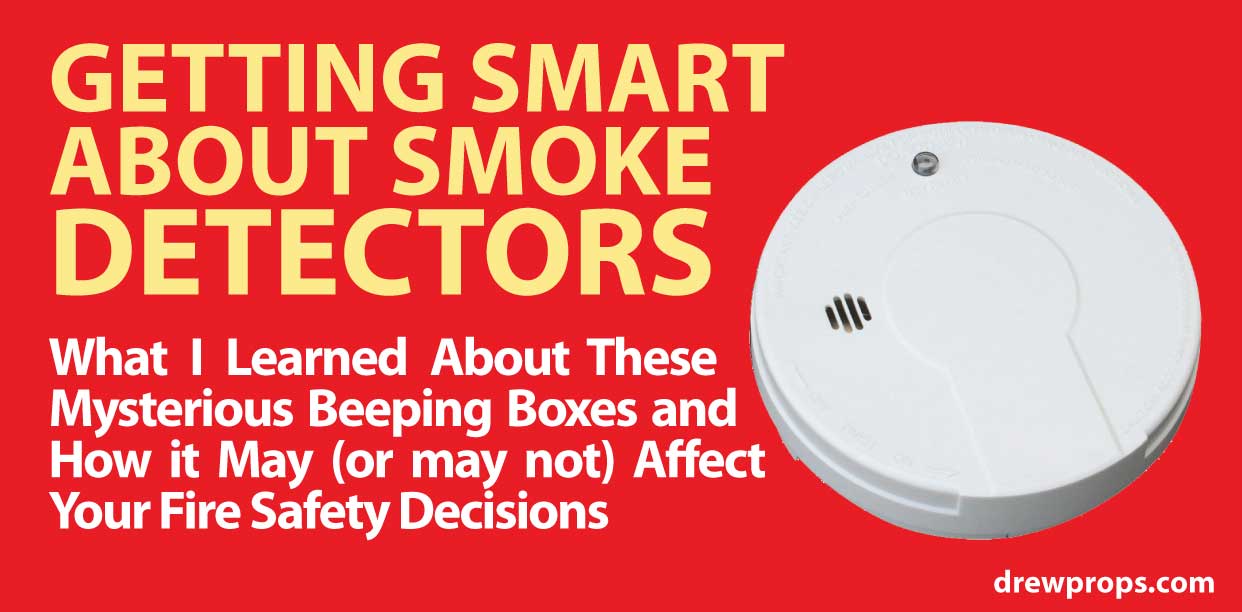
When is the last time you thought about your home’s smoke detectors? I typically change the batteries in our home’s smoke detectors around this time every year, usually on the same weekend when we “spring” our clocks forward an hour for Daylight Saving Time. Last March we lost my dad and all of my normal routines fell away for quite a long time, and so it came as no surprise a week ago when I discovered that my smoke detectors were a year past due for having their batteries replaced.
Like me, a lot of people lose track of their normal routines and some are unfortunate enough to experience a fire in their homes. According to the National Fire Protection Agency: “In fires in which the smoke alarms were present but did not operate, almost half (46%) of the smoke alarms had missing or disconnected batteries.”
Keeping the batteries in your smoke detectors up to date cannot be stressed enough, but there’s one additional detail about these devices that I only learned about this year: smoke detectors need to be replaced every ten years.
Here’s how I found out.
My dad turned his shopping history into an art form by writing notes directly onto his purchases using a permanent marker. From major appliances to his own underwear, he could almost always figure out where he’d bought a thing thanks to those sharpie notes. While this was of course wildly OCD it was also pretty clever because when an item needed replacing he could begin his search for a replacement at the store mentioned in his note (it’s important to understand that he began this practice in an age before it was possible to search for things online).
Thanks to a bit of dad’s OCD rubbing off on me I could plainly see that these smoke detectors had been put into service back in January of 1998, making them more than 19 years old.
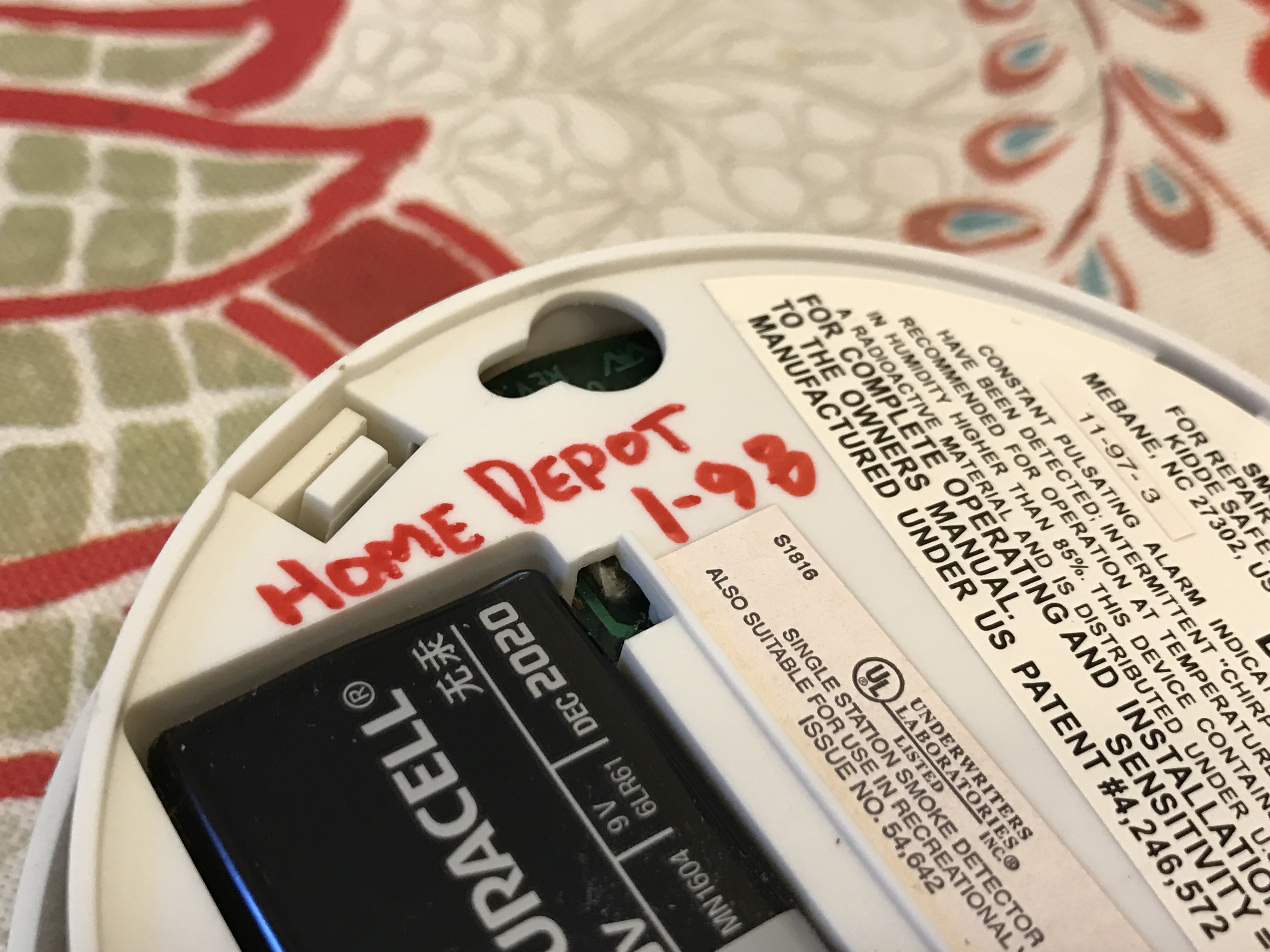
Nineteen years is a long time but I wasn’t certain that the age of the detector could pose a problem until I had a chance to look at a slightly newer smoke detector stationed in a hallway. The newer model had been installed back in 2010 and featured a built-in 10 year battery. According to the notes on the back of the detector the entire unit had to be disposed of when those 10 years were up, which sent me to the internet to find out why.
I learned from the National Fire Protection Agency that 8 to 10 years is the recommended replacement frequency for all consumer smoke detectors, as the gizmo that detects smoke particles can become compromised by dust buildup and general degradation – and th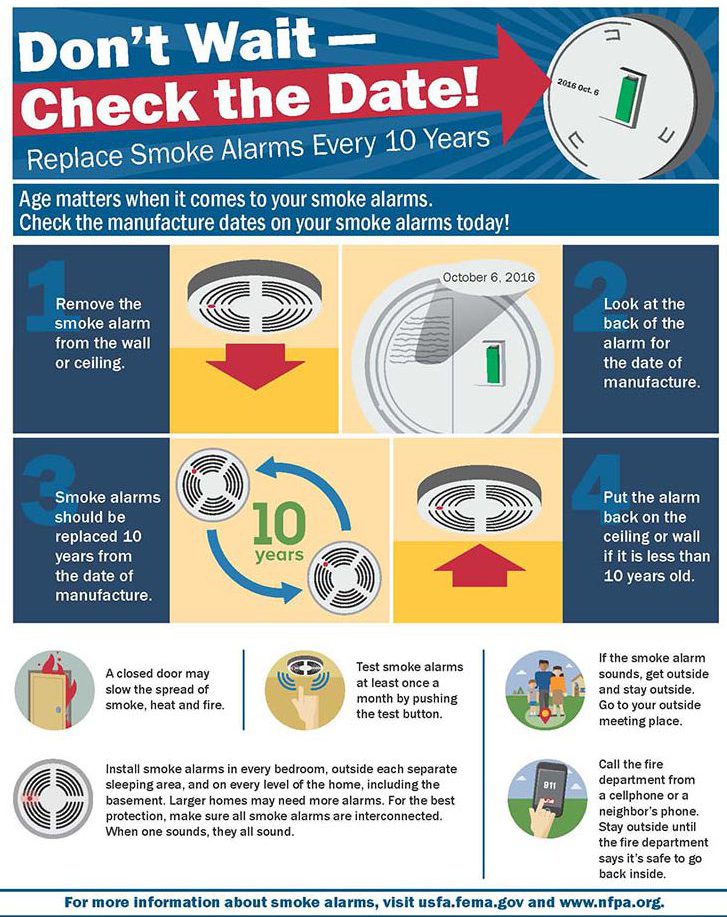 e U.S. Fire Administration provides outreach materials to help spread the word about replacing old detectors.
e U.S. Fire Administration provides outreach materials to help spread the word about replacing old detectors.
Realizing that my detectors were an alarming 9 years beyond the recommended age limit I jumped on Amazon and started looking for replacements. One of the first problems that I encountered was one of nomenclature. I kept typing in the term “fire detector” instead of “smoke detector”, which proved confusing because there are actually two types of units available, and one of them is in fact a fire detector. The difference is that smoke detectors detect particulates of smoke in the air while a fire detector actually detects active flames using a photoelectric eye.
Whether you’re shopping for a smoke detector or a fire detector you’re going to have to decide between buying hard-wired units and battery-powered units. Since my house was built in the 1960s it would be expensive for me to run additional electric wire just to supply my smoke detectors with constant power – and even if I did do that, those units would still require backup batteries which would have to be replaced annually, so a hard-wire build out simply didn’t make sense for me. Perhaps they will make sense for your home.
A lot of manufacturers and many experts explain that smoke is a precursor to the appearance of an actual fire, making a smoke detector a very good choice for early warning. If you want to cover all your bases and are willing to pay more you can buy units that feature a combination of smoke and fire detector units. You might take a look at the First Alert SA320CN or the highly rated First Alert SA3210 Dual Sensor with a sealed 10-year battery.
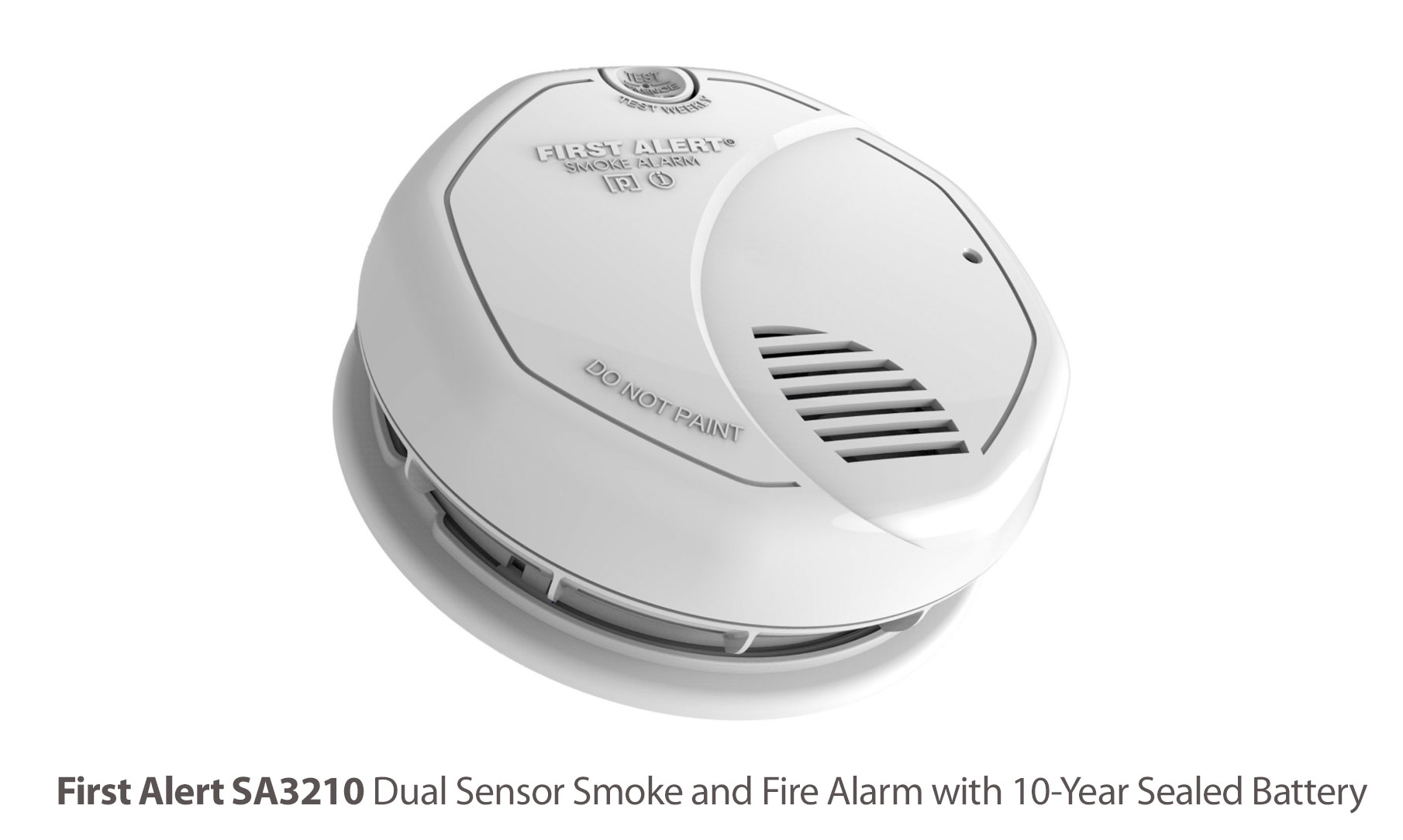
If you’re also worried about carbon monoxide in your home take a look at this combination unit, the KIdde SCO5CN, a battery operated combination smoke and carbon monoxide alarm.
The coolest unit that you are likely to run across is the Nest Protect, a highly rated smoke and carbon monoxide alarm and a part of Nest’s home automation line, which is available in both battery only and wired versions. Modern wired systems can communicate with each other and even reach out to you via your smartphone. If you have the opportunity and the budget to afford these systems they seem like a good idea.
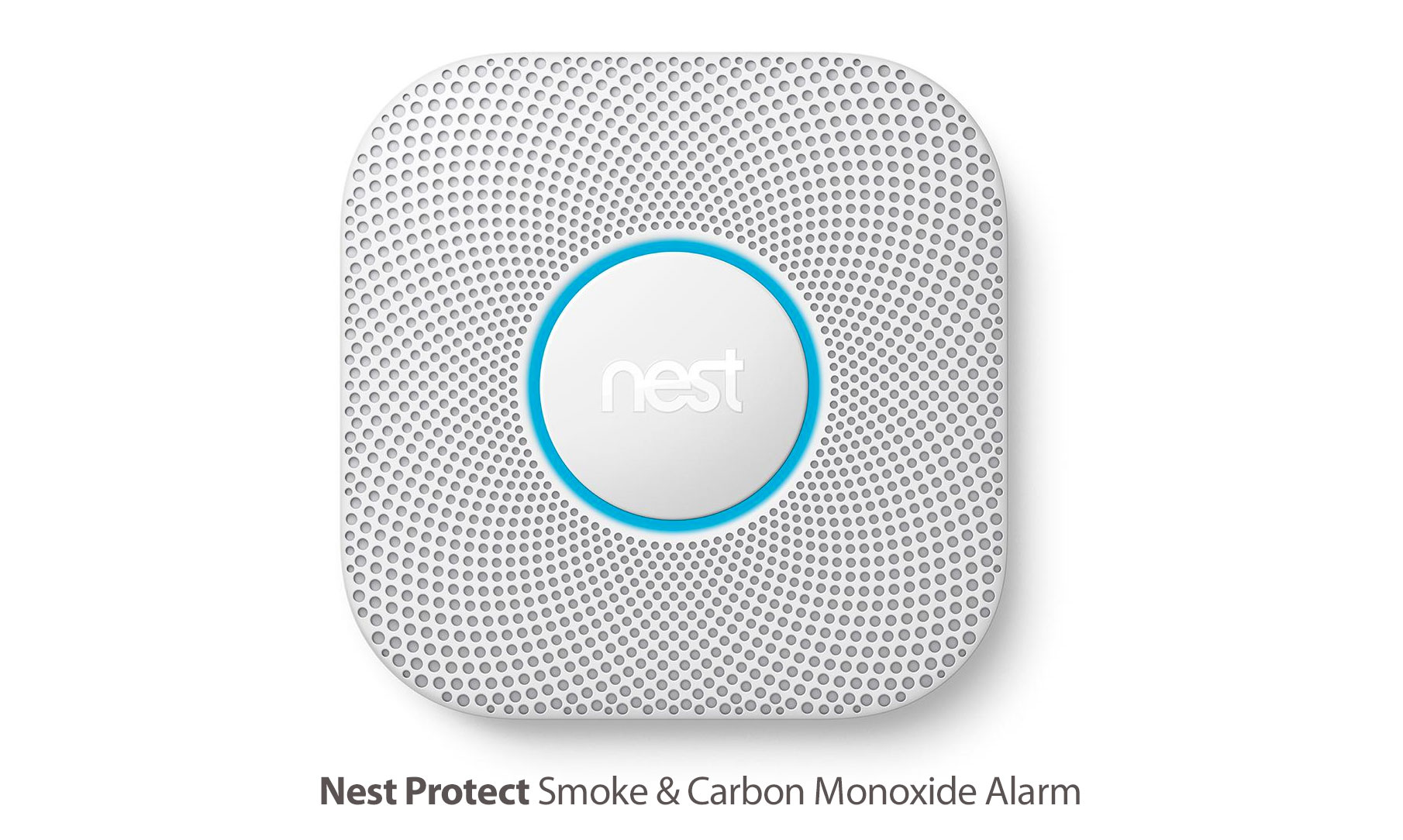
In my case I decided to buy the Kidde i9050, as it bore a similar design to the unit it was replacing, which was the Kidde 0914. The new units were manufactured in January of this year, so I know that they’re fresh off the line. With my dad in mind I pulled out a Sharpie and wrote the date on the back of the new units and on the side of the 9-volt batteries, so every year I’ll be able to tell when I last replaced the batteries and in ten years I’ll know it’s time to buy new units.
The instructions that come with these detectors (the ones that you will undoubtedly throw away without a second glance) suggest locating detectors on the ceiling, about 4 inches away from the wall. The next best location is on the wall close to the ceiling, but not too close the the ceiling. There’s apparently a “sweet spot” that begins 4 inches below the ceiling and extends to 12 inches below the ceiling. I assume that this is the area in which smoke begins to “curl” as a fire builds. Never place a detector directly in the corner of the ceiling as that space is occupied by dead air.

Inside the battery compartment of each Kidde i9050 unit are two screws, two plastic wall anchors, and a plastic pin to discourage tampering. One of the differences I noticed between the old and new units is that the newer ones are larger, which required that I drill new holes for new wall anchors. I did not insert the tamper-proof pins because I’m afraid that I will not remember them in the future and would end up destroying a detector when I attempt to take it off the wall in order to check its battery.
Radioactivity
After installing the new units I was left with a pile of old smoke detectors on the kitchen counter. I kind of remembered that these things were radioactive. Didn’t some kid get in trouble by making something from these things? Reading up on this aspect of the detectors I noted that the ionization process requires a ridiculously infinitesimal level of radioactivity and these units cannot cause you injury unless you jimmy one open and jam it into your mouth.
Please do not do this.
Although they tell us that smoke detectors are not able to cause injury I did wonder if they presented some sort of ecological hazard that might demand a specialized disposal procedure. The answer I got back from the internet is: not so much, at least not so far as our current Federal standards are concerned – and the current mood in Washington is one of decreased regulation for environmental protections, so I wouldn’t look for anything to change any time soon.
In what I considered to be the most unexpected place, the United States Postal Service has a web page addressing the proper disposal of smoke detectors, presumably because they may be involved in shipping them at some point in the process.
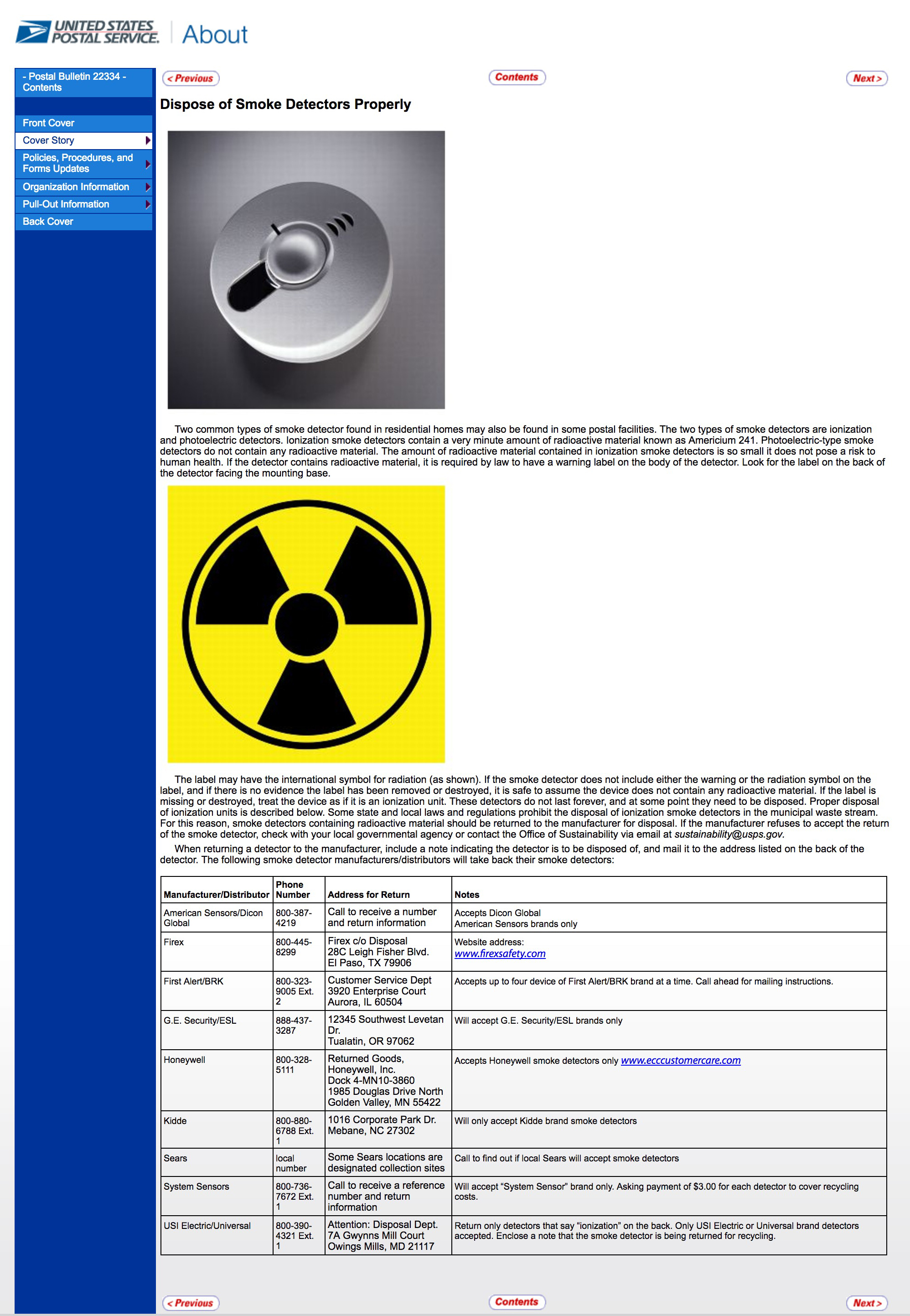
According to that page: “The amount of radioactive material contained in ionization smoke detectors is so small it does not pose a risk to human health.”
Confusingly, that same page of the USPS website provides information for contacting various manufacturers to find out if they offer a “take back program”. A telephone number for Kidde is listed there, but from the many people who have asked this question before me I already know that Kidde’s official position is essentially “dispose of your unit according to local government’s regulations”, which includes tossing them into the garbage and not sending them back to Kidde – because as of this writing there is no page on the Kidde website that offers a discussion of this issue.
Debates rage on the web regarding the ecological soundness of disposing of any type of circuit board in a landfill, due to various potentially hazardous materials that can be found on these boards – materials that may ultimately present a health risk to people downstream in both time and geography. If your community offers a hazardous materials disposal facility I would suggest that you get in touch to find out if they might accept your old units. Mine does not and so I will look into other methods of disposal, including putting them into a regular garbage can.
I hope that this post has been helpful to some of you looking to update your fire safety system at home. If you do not have one, I would recommend purchasing a fire extinguisher for your kitchen – the Kidde FA110 or the Kidde 21005779 Pro 201 are good options, and if you have rooms on a 2nd story you might consider buying the Kidde KL-2S 2-story Fire Escape Ladder or the Kidde 468094 Three-Story Fire Escape Ladderd for rooms on the 3rd story. If you’re a really lucky person you might even be given a Love Ladder ;)
The U.S. Fire Administration has some excellent materials you can use to help you stay up to date with your smoke detectors. This graphic in particular is just great:

And it’s available as a PDF as well, just click here to download it! (PDF file, about 500Kb)
Fire Alarms and Your Children
Just this week ABC’s Good Morning America program ran a terrifying story that has been around for quite a number of years but has escaped my attention until now: children tend to sleep through the alarm cycle of a smoke detector. They showed a real life demonstration with kids who slept through more than 4 minutes of a blaring alarm, an eternity in the instance of a fire where every second counts. At the end of the segment they indicated that researchers were experimenting with alarms that might use recordings of the parents’ voices to cut through the children’s sleep state, but I wouldn’t expect to see those released anytime soon.
Wrap Up
Finally, I’d love to know which detector(s) you ultimately selected, and what your reasoning was for picking the unit(s) you did, as your choices might help me make better decisions for what I should buy in 10 years – please let me know! Thanks :)
Additional Reading
NFPA report – Smoke alarms in U.S. Home Fires – This report focuses chiefly on smoke alarm presence and performance in home fires reported to local fire departments in the U.S. Additional topics include the benefits of working smoke alarms, reasons why smoke alarms fail to operate, smoke alarm performance by power source, the difference in smoke alarm performance in one- or two-family homes vs. apartments, and characteristics of fatal home fire victims with and without working smoke alarms. The literature on smoke alarm audibility and waking effectiveness is also discussed. Fire death rates with various combinations of smoke alarms and automatic extinguishing systems are also presented.
New York Times (Consumer World) – September 29, 1990 – Federal officials estimate that up to 85 percent of all dwellings in the United States have smoke detectors, but that as many as a third of them may not work.
StackExchange: What are the environmental effects of discarding radioactive smoke detectors? Exactly what are the environmental impacts of discarding radioactive material?
It’s great that you elaborated that there are two types of smoke detectors when it comes to the power source. I’m also living in a very old house that I inherited from my parents. I don’t want to spend much on wiring either, considering that you have to replace the backup batteries annually anyway. I guess the battery powered ones are a better fit for me. I’d be sure to go over this preference when looking for a contractor that will help me replace my old smoke detectors at home. Thanks for this very insightful read!